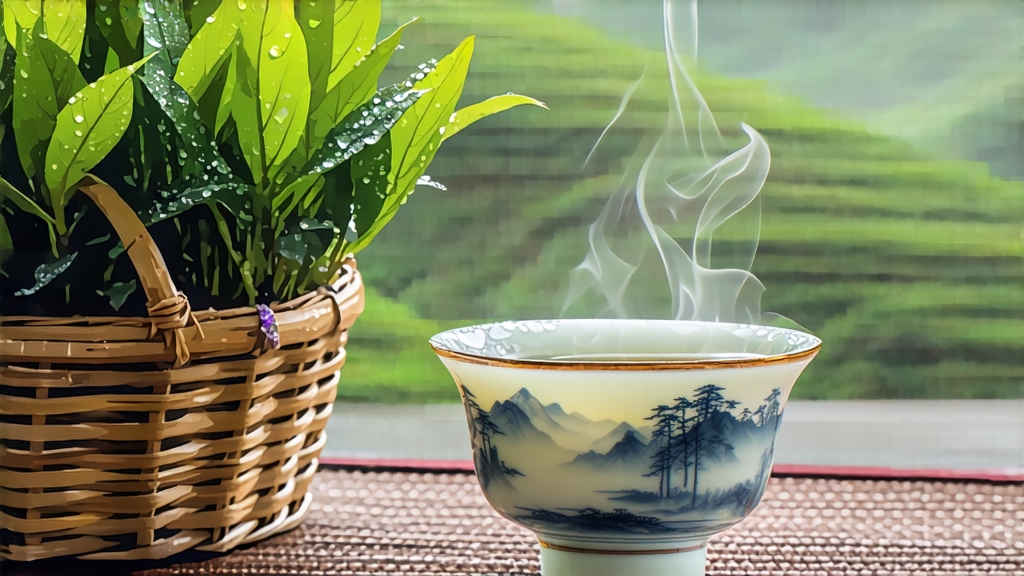
Alishan High-Mountain Oolong is not merely a tea; it is a liquid map of Taiwan’s central mountain range, a whispered conversation between monsoon clouds and ancient rock strata, and a cultural heirloom carried across the strait by Fujianese settlers in the nineteenth century. To understand it is to step into a world where altitude, cultivar, and human patience converge in every shimmering, jade-green leaf.
History and Terroir
The story begins in the 1880s, when tea makers from Anxi County, Fujian, crossed the turbulent Taiwan Strait with cuttings of the famed Qing Xin (Green Heart) cultivar tucked inside bamboo tubes. They settled on the lower flanks of Alishan—literally “Ali Mountain”—a 2,600-metre spine of metamorphic shale and sandstone that catches the Pacific’s moist typhoon breath. At elevations between 1,000 and 1,400 metres, nights are ten degrees cooler than days, fog diffuses sunlight into a soft silver glow, and the diurnal shock forces the tea bush to thicken its cell walls, concentrating amino acids and fragrant oils. The result is a liquor that tastes less like brewed leaves and more like mountain air liquefied.
Cultivar and Garden Ecology
While Qing Xin remains the aristocrat, modern gardens also cultivate Jin Xuan (TTES #12, “Milk Oolong”) and the newer hybrid TTES #23, each responding to Alishan’s terroir with distinct personalities. Farmers plant tea amid wild plum, bamboo, and Japanese cedar whose roots share mycorrhizal networks, reducing the need for synthetic fertilizer. Grasses are left to flower between rows, inviting ladybugs that keep leafhoppers in check—a living pesticide whose bite actually enhances complexity by triggering the plant’s defense compounds, adding a subtle honeyed note to the finished leaf.
Pluck and Oxidation Calendar
The harvest window is cruelly short: two flushes in spring (late March to early May) and winter (mid-October to late November), when fog and sun perform their duet. Pickers climb before dawn, selecting the “small open leaf” triad—two leaves and a bud—still taut with overnight dew. By 9 a.m. the baskets descend to the factory, where the leaves are solar-withered on large bamboo trays for exactly twenty-three minutes, long enough to shed 6 % moisture but short enough to preserve the bright chlorophyll that will later translate into a pistachio-colored infusion.
The Dance of Craft: Ball-Rolling Oolong
Alishan Oolong belongs to the “qing xiang” (light fragrance) family, oxidized only 15–25 %. Once withered, the leaves are tumbled in heated drums to arrest enzymatic browning, then wrapped in giant white cloths and placed into hydraulic ball-rolling machines that mimic the traditional foot-pressing motion. Each orb rotates 120 times per minute for three minutes, is unwrapped, re-wrapped, and rolled again—up to thirty cycles over eight hours. This laborious bruising ruptures cell walls without tearing the surface, coaxing out fragrant terpenes while preserving the leaf’s hemispherical shape. A final low-temperature bake at 80 °C for six hours locks in the signature “high mountain rhyme” (ga shan yun), a cool, tingling sensation that lingers between the tongue and hard palate.
Sculpting Flavor through Fire
Two weeks after the primary bake, master roasters perform a “refining fire” (wen huo). Using long-handled bamboo sieves over electric charcoal, they cycle the tea through five short roasts, each lasting ninety seconds and separated by forty-eight hours of rest. The goal is not to add toastiness but to sublimate remaining moisture, allowing amino acids and simple sugars to enter Maillard marriages that amplify orchid and fresh cream notes while keeping the cup crystalline.
Water, Vessel, and Ritual
To brew Alishan Oolong authentically, begin with soft water whose TDS lies between 30 and 60 ppm; hard minerals flatten the ethereal high notes. Heat to 95 °C—just below a rolling boil—then pre-warm a 120 ml porcelain gaiwan or a slim-walled zhuni clay teapot. Use 6 g of leaf, roughly two heaping tablespoons. The first infusion, twenty seconds long, is a “wake-up rinse” poured over the cups to season them; discard or sip if